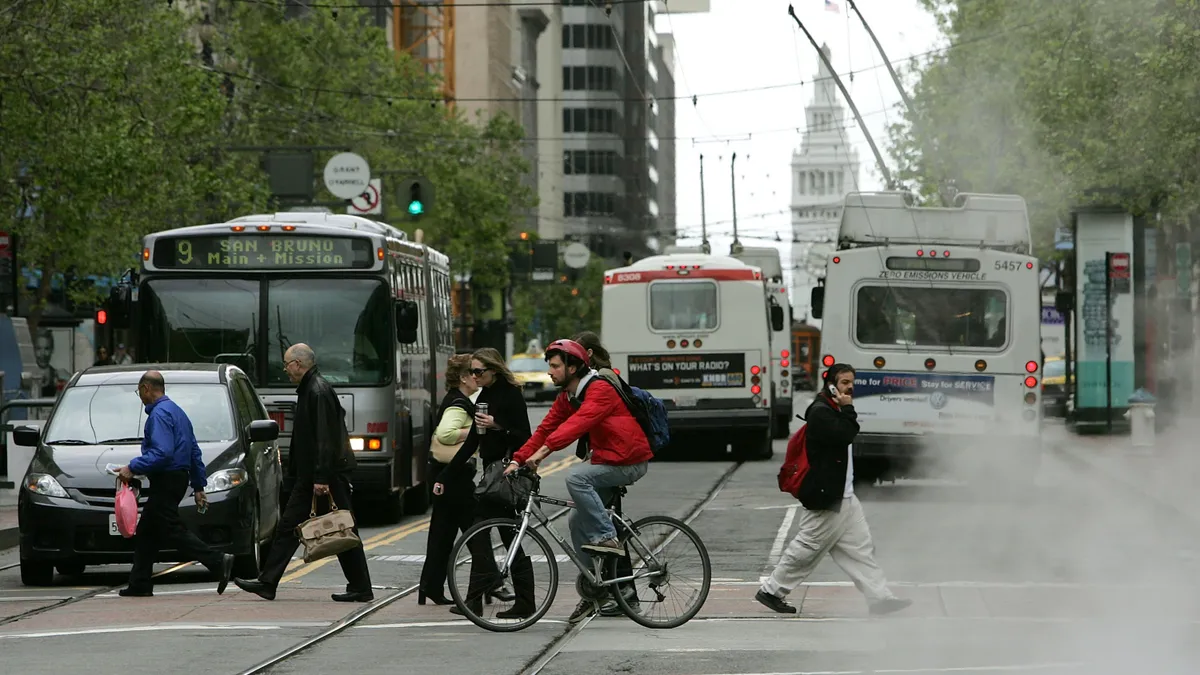With U.S. pedestrian deaths spiking to decades-high levels in 2022, panelists at a StreetLight Data webinar in mid-June discussed how communities can address the crisis. Speakers highlighted not just policy changes but also ways that data can help planners and advocates make their case.
Despite nearly a decade of Vision Zero efforts, which aim to design roads to prevent serious injuries and fatalities, "We’ve seen the exact opposite — an increase in pedestrian and bike fatalities," said Robin Chase, co-founder and former CEO of Zipcar and co-founder of the New Urban Mobility Alliance.
Panelists looked for a silver lining in the grim trend. “We’ve gone from victim blaming to, ‘What does the design of the roads have to do with it?’” Chase said. At least the epidemic of pedestrian fatalities is getting some national attention, said Jeff Peel, a StreetLight customer success executive.
Part of the problem is that federal regulations have generally focused on car drivers, not bicyclists or pedestrians, panelists said. Changes in the streetscape during the pandemic offer an opportunity to start adjusting that focus.
At the start of the pandemic, more people were walking everywhere, said Chris McCahill, managing director of the State Smart Transportation Initiative at the University of Wisconsin, Madison, Smart Growth America.
“We’ve seen the rise in slow streets, the idea that streets could be used for not just cars,” said Kay Cheng, senior transportation planner for engineering and consulting firm WSP, who manages its Complete Streets and Vision Zero transportation projects. “What are we going to do with these streets we’ve carved out” for uses other than driving? Cheng said. “How are we going to make them permanent? We’re checking residents’ appetite for seeing streets in a different way.”
StreetLight Data’s recent report on the relationship between average vehicle speeds and pedestrian fatalities was highlighted during the event as well. In regions with higher speed limits, more walking meant more deaths. Areas with lower speed limits saw no changes in death rates. Arterial roads with high speed limits are especially dangerous for pedestrians. There are more such roads in low-income areas and communities of color, Peel said.
“We need to understand where the most dangerous road design is — big, fast, wide arterials,” McCahill said. “We also need to understand where people are not walking because the roads aren’t too safe.”
Information about latent demand for nonvehicular use of roads can drive investment, McCahill added. For example, the Massachusetts Department of Transportation is measuring the potential for walkable trips and everyday biking, with the aim of informing targeted investments that encourage car-free modes of transportation.
SSTI is “working with a lot of people to measure accessibility, and how many jobs and services and activities can you reach by transit,” McCahill said. The Virginia Transportation Department is using such metrics to target investments.
When starting to spend money to improve pedestrian safety, “look for the easy things that are going to get a lot of public support,” said Rob Viola, director of safety policy and research at the New York City Department of Transportation. Two ideas he said are very cheap and have great injury-reduction numbers: leading pedestrian intervals at traffic lights and turn-calming programs to slow down cars at intersections.
“Most things we’re talking about are for high-density cities,” Viola cautioned. “But there’s lots of communities that don’t have sidewalks, where you have to walk half a mile to the nearest crossing. Speed is a massive issue because you have 40, 50 mph speeds going through areas where people are walking.”











